Single-Board Computers with Mini PCIe Slots
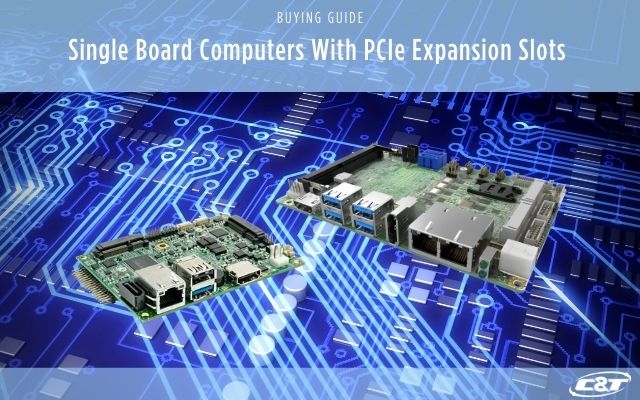
Single-board computers with mini PCIe expansion slots are a powerful combination that provides powerful compute power and speed in a small form factor. With the development of 5G as the next-generation wireless connectivity, SBC modules are great for IoT applications that are function- specific products. Moreover, the mini PCIe expansion provides exponential upgrades and functions for the SBC embedded systems to run more complex and challenging tasks at the edge. That said, the combination between SBC and mPCIe makes a robust solution for computing and analyzing data right at the edge.
What Is A Single-Board Computer With PCIe?
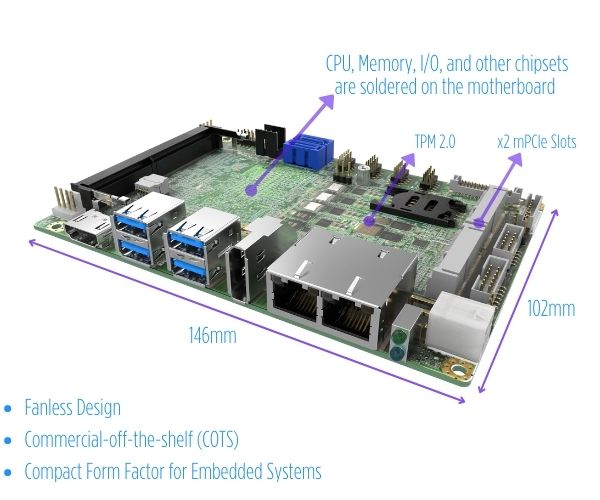
Single-board computers or SBCs are computers with all-in-one infrastructure where the computer's CPU, RAM, I/O ports, chipsets, power input, etc. are all soldered onto a single motherboard making them a commercial-off-the- shelf (COTS) computer system with mini PCIe expansion slots for performance upgrades. For IoT and embedded system applications at the edge, SBCs with mPCIe slots are great due to their compact, powerful, and flexible features.
SBC Form Factors
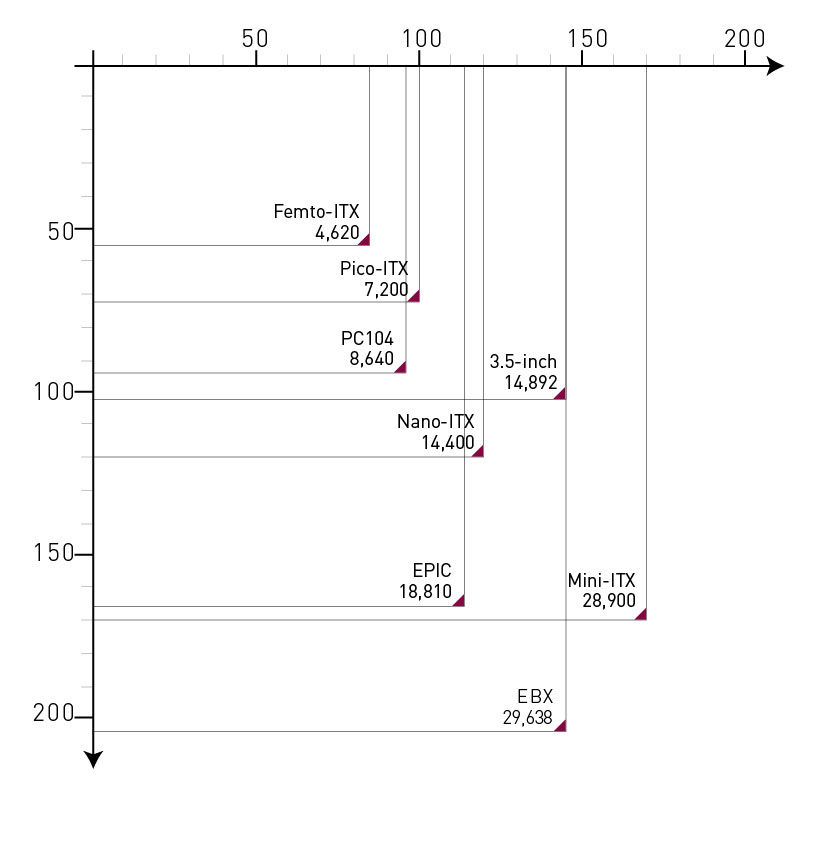
Due to all the parts and components are molded onto a single plastic circuit board (PCB), SBCs are considerably smaller than most of the standard motherboard form factors such as ATX standard form factors. However, despite the smaller size, SBCs are remarkably powerful and capable of performing complex tasks. That said, understanding different types and sizes of SBCs will be beneficial for implementing the best integrations based on various applications.
The Advantages Of SBCs With mPCIe
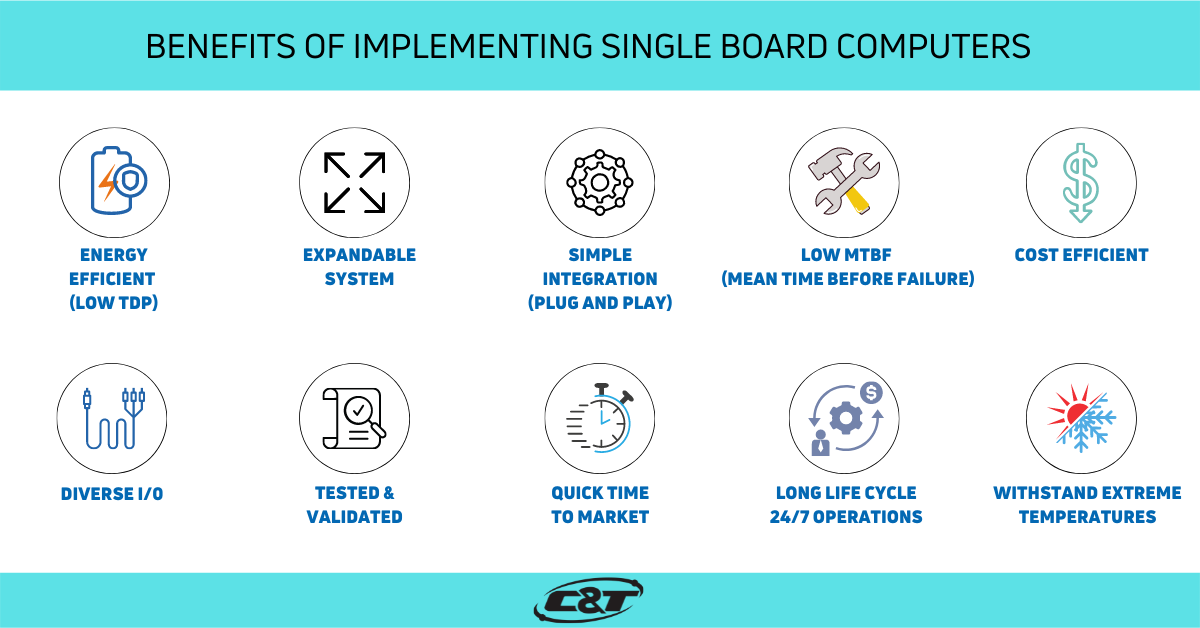
Deploying devices at the edge does not only require a compact form factor solution for space constraint issues, but it also demands a wide array of elements that will determine the success of the application. Particularly for mission-critical applications, SBCs need to maintain their reliability , durability, and longevity amid deployments. This is where you need industrial-grade SBCs with mini PCIe slots for various applications including autonomous vehicles, intelligent healthcare, smart manufacturing, machine inference analysis, and many more.

What Is mPCIe?
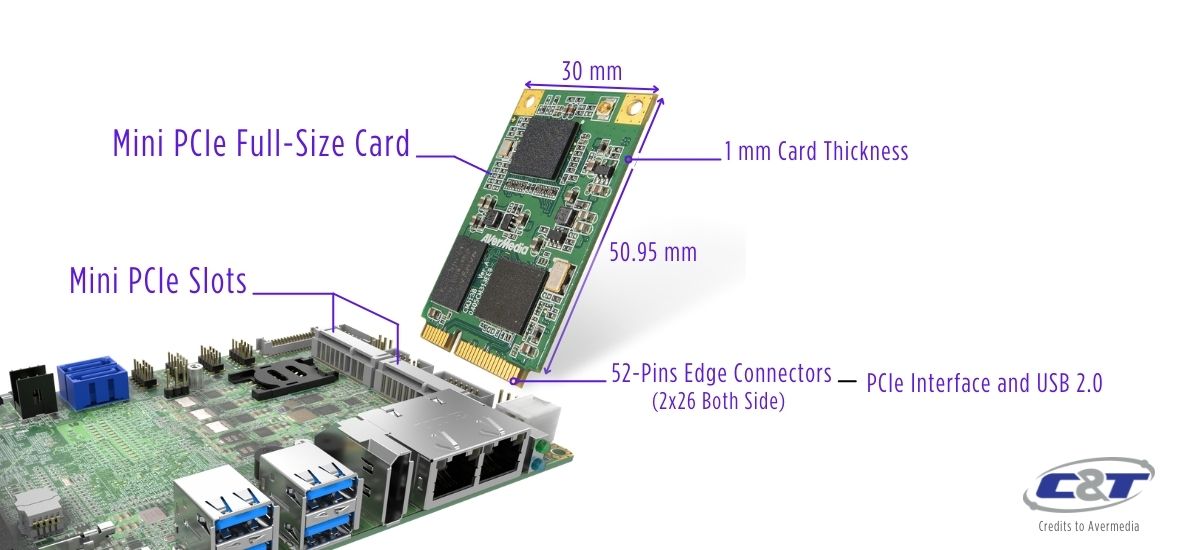
Mini PCI express or mPCIe in short is a minimized PCIe peripheral card interface that was specifically designed for the mobile world for space-constrained applications. It is a different card form factor with PCIe but running the same blazing-fast PCIe connection interface on a single PCIe lane. Mini PCIe is great due to its tiny size cards that are capable of withstanding harsh environments such as shock and vibration.
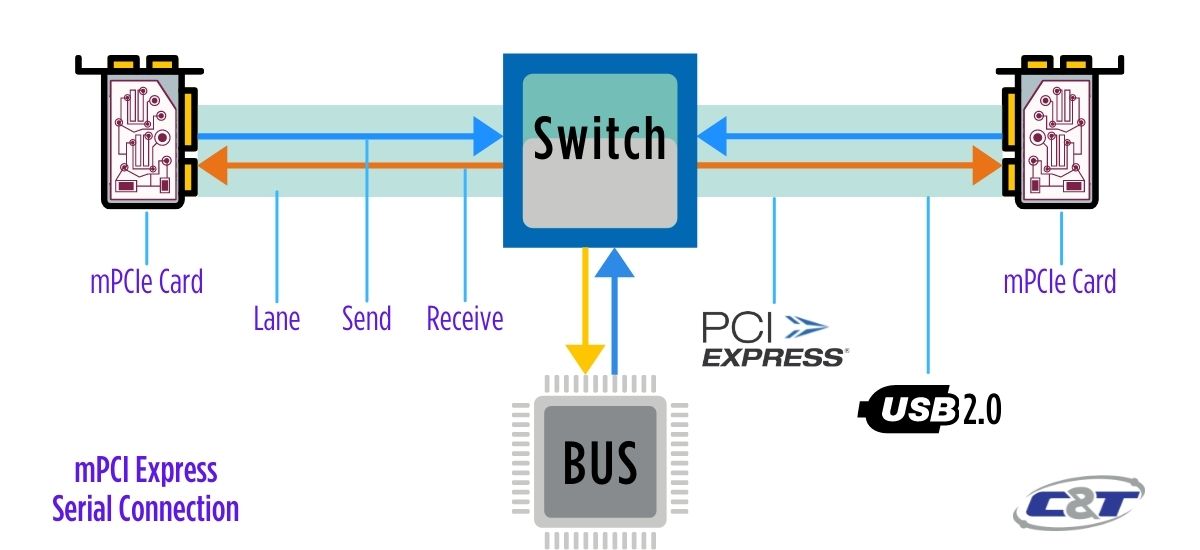
Mini PCIe offers some unique features when compared to the original PCI Express bus. For example, mPCIe is configured with both standard PCI express capabilities and USB 2.0 signals for a myriad of flexibility in the peripheral design of the system. This makes it ideal for remote deployments that require feature flexibility.
mPCIe Form Factor
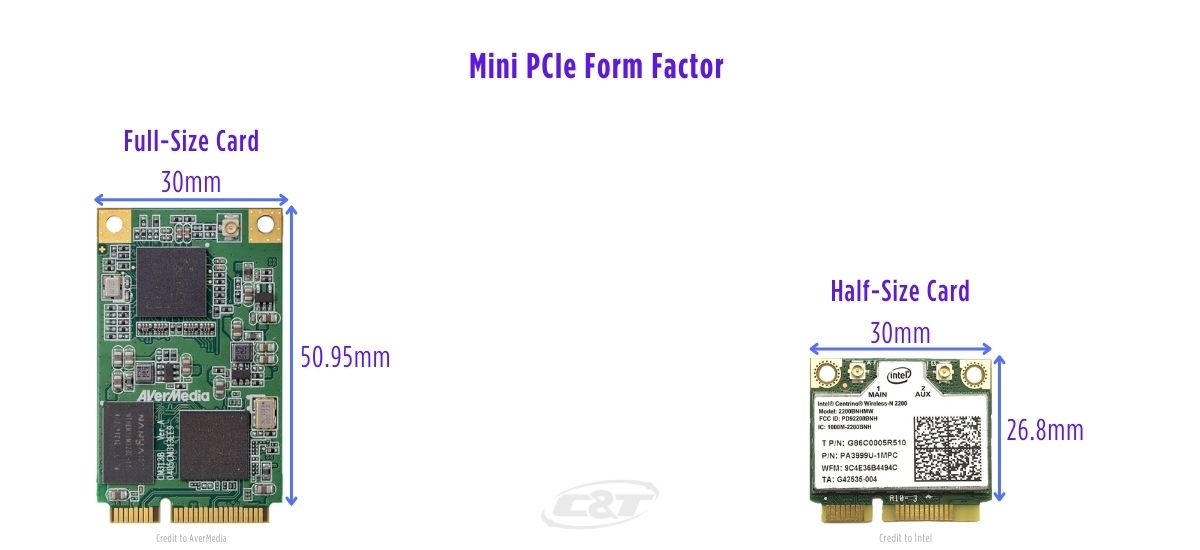
Mini PCIe cards are divided into two different sizes, full-size cards, and half-size cards. Mini PCI Express cards measure in at 30 x 50.95mm for the full-size cards and 30x26.8mm for the half-size cards. The PCIe form factor is too large for smaller embedded systems, and so the standard evolved into a miniature mini PCI Express form factor. Originally, mPCIe cards were attached directly to the motherboard to design slimmer laptops. Then, Mini PCIe applications grow exponentially in industrial embedded systems, routers, and gateways where they can provide various functions upgrade.
Benefits of mPCIe
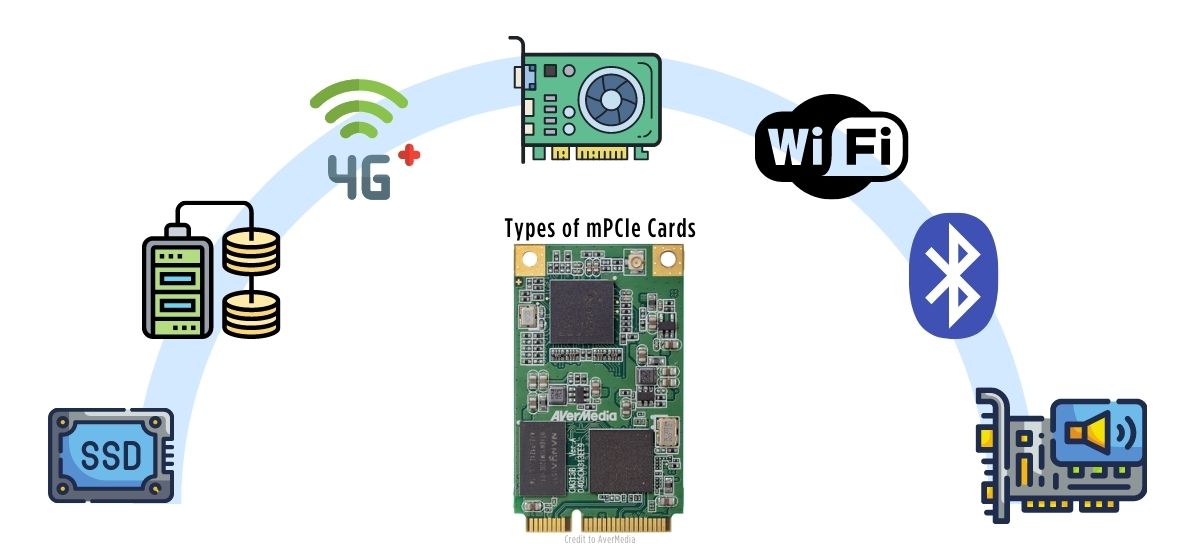
Implementing mPCIe expansion slots into single-board computers can provide connection reliability because they are running the PCI Express interface protocol which is tested and widely preferred among commercial and industrial sectors. PCIe connectors also provide various supports within the industrial applications including SSDs, RAID controller, WiFi/Bluetooth cards, video/audio capture cards, 4G/LTE cellular cards, and more. They cover not only industrial applications but also mobile broadband applications as well. Some of the mPCIe single-sided cards can be mounted on the heatsinks for stability and heat dissipations.
The Difference Between mPCIe and mSATA
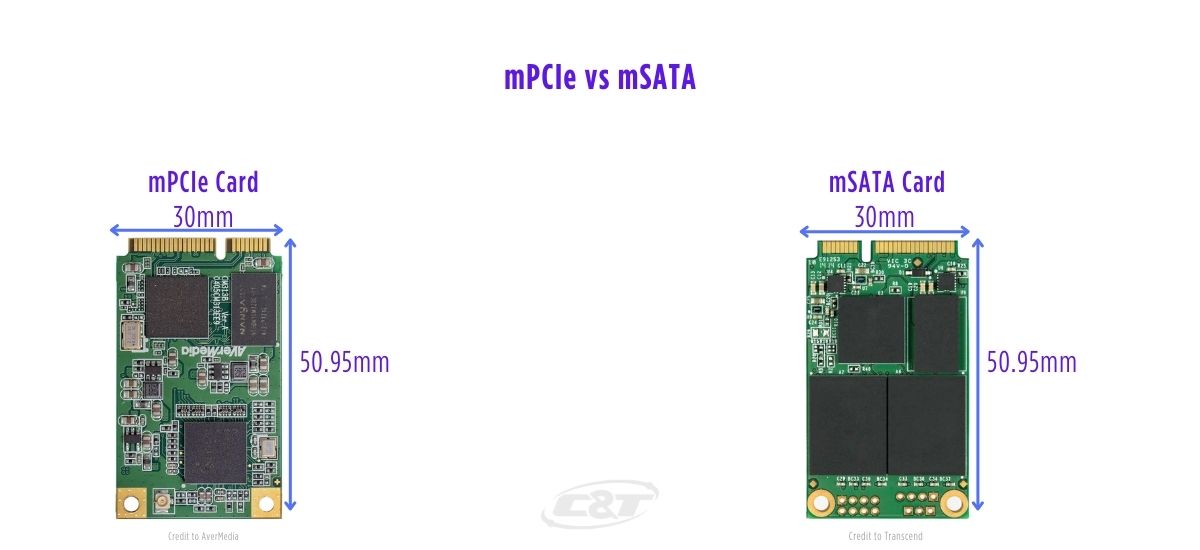
The main difference between mini PCIe and mSATA is the connection interface. PCI Express is an expansion protocol for desktop computers and servers. They send and receive data signals through serial link connections in a lane using the PCIe protocol. On the other hand, SATA was originally used for mechanical storage drives that support native command queuing through AHCI (advanced host controller interface) protocol to read and write data.
At a glance, mPCIe and mSATA cards can be hard to distinguish because they look very similar. mPCIe and mSATA physical traits are the same for both form factor and connector, which make it difficult to set apart. Size-wise, both mPCIe, and mSATA cards both offer 30x50.95mm for the full size and 30x26.8mm for the half-size form factor cards. Thus, you can physically plug in mSATA cards into mPCIe slots and vise versa. However, it won’t work properly due to the different connection protocols between SATA and PCIe interface. However, some mSATA cards might be compatible with mPCIe card slots by using a SATA host controller. Generally, there is a label that clearly states mSATA or mPCIe/mSATA shared to tell the compatibility for both PCIe and SATA interface. For SSD usage, mSATA is the clear choice over mPCIe despite mPCIe’s wide range of applications.
The Transition from mPCIe to M.2
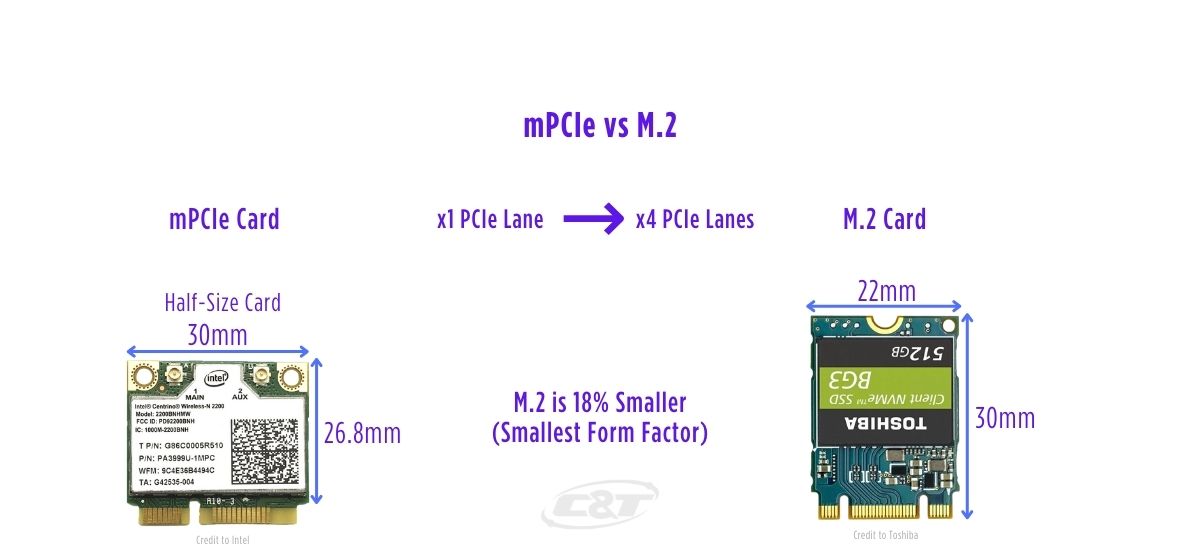
M.2 is the next generation form factor that replaces mSATA and mPCIe for internal expansion slots. Especially for SSD storage, M.2 supports NVMe (non-volatile memory express) as the logical device interface that is astronomically faster than the SATA interface. The main advantage of M.2 NVMe is it replaces the bottlenecks from SATA interfaces where SATA transfer speed can only reach up to 600MB/s compared to 4GB/s for NVMe interfaces. M.2 PCIe lanes can reach up to four lanes with PCIe 3.0 that equal to 4x1GB/s. This eliminates SSD's data transfer bottlenecks. In addition, M.2 smallest form factor size measured at 22x30mm which is 18% smaller compared to mPCIe smallest size card.
Frequently Asked Questions:
1. Can you put a mini PCIe into a PCIe slot?
The short answer is no, you can't. Both PCIe and mini PCIe use the same interface but completely different physical form factors. PCIe x1 is the smallest PCIe slot that is not compatible with mPCIe cards.
2. Will mSATA work with mPCIe?
It depends, some mPCIe slots can support both mPCIe and mSATA cards using SATA host controller to properly change from the PCIe interface to SATA interface.
3. What is the mPCIe used for?
Mini PCIe expansion slots are used to provide additional features and peripherals for the computers using mPCIe cards. This additional upgrade can include SSDs, RAID controller, WiFi/Bluetooth card, video/audio capture card, 4G/LTE cellular card, and more.
4. What is the main difference between PCIe and mPCIe?
There are 3 main differences between PCIe and mPCIe, the number of lanes, form factors, and connectors. Mini PCIe slots only have one lane where PCIe slots can range from x1 up to x16 lanes which also affects the card form factors and physical connectors.
5. The difference between SBC and Motherboard?
SBC overall is a powerhouse molded in a smaller form factor PCB (plastic circuit board) and the main difference is all of the computer components including CPU, GPU, Memory, I/O, etc. are soldered into a single piece of hardware. Whereas , on the motherboard, you have the choice to plug in and plug out the computer components.

